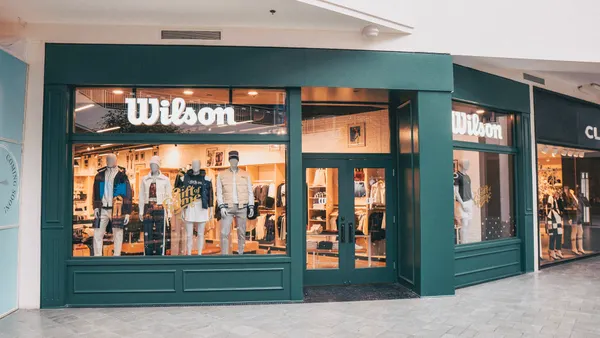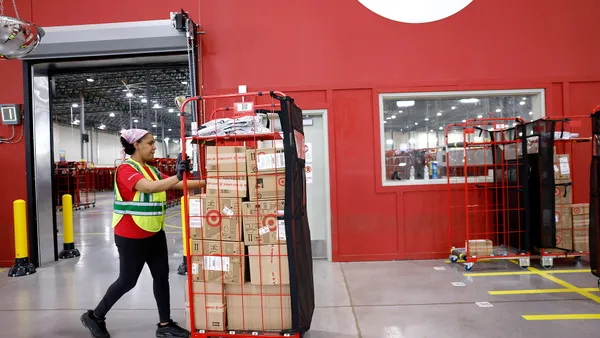Dive Brief:
-
Shopping via mobile phone accounted for as much as 36% of all online shopping during Thanksgiving and Black Friday, according to one survey, but another survey found that this increased usage didn’t extend to use of mobile payment apps for in-store purchases, which were used at checkout less than 1% of the time.
-
The survey that measured mobile’s share of online sales over the holiday at 36%, which came from Adobe Systems, also noted that this share was up slightly from 34% last year.
-
The other survey, from payments firm Cayan, said that mobile payments were used for only 0.6% of in-store purchases nationwide, with California consumers using it the most, for about 1% of all in-store purchases. Meanwhile, almost 90% of in-store payments were completed via credit or debit cards.
Dive Insight:
If these two trends — increasing shopping by mobile, but also negligible payments by mobile — continue for the rest of the holiday shopping period, it could be at least a little bit of a bittersweet season for a lot of mobile companies, payments providers and retailers that have invested in and rolled out mobile payments apps over the last couple of years.
Some of them will be happier than others, of course. For retailers with their own branded mobile payment apps, such as Wal-Mart, these apps at the end of the day may be more valuable as a customer relationship vehicle. The retailers are not necessarily trying to make them work as standalone ventures, and although they would certainly like to see people use them, they would be more than satisfied with healthy holiday spending, and probably would set aside the performance of their mobile payments apps for further discussion long after the holidays are over.
The banks and card networks with mobile payment apps (like Chase and Citibank, to name a couple) probably are not too happy about the lack of mobile payments usage to start the holiday season, but similar to retailers, they have other fish to fry. The Cayan survey noted that almost 90% of in-store payments on Black Friday used cards, and about 55% of that group used EMV chip cards, with the other 34% or so using magnetic-stripe cards. That's a decent showing for chip cards in what has been a significant year for their adoption, though it also emphasizes how much farther the card companies need to go to get mag-stripe cards out of the market.
Meanwhile, the companies that are likely most put off by these survey findings are Apple, Samsung, Google and others who are much more invested in the success of mobile payments. These companies have invested the most in the underlying and enabling technologies for mobile payments, and they have the most to lose if no one uses their mobile payment capabilities. In-store proximity payments may just one part of their proposition, and one bad day or one lousy holiday season will not be enough to make them change their outlooks, but it should make them review their promotional plans. Maybe it's time to start offering consumers more incentives to switch from cards and cash to phones.
This story is part of our ongoing coverage of the 2016 holiday shopping season. You can browse our holiday page for more stories.











